Embracing Diversity: How Businesses Can Foster Inclusivity and Social Justice on Social Media4/9/2024 As a social media marketing professor, I've observed how social media can shape opinions and social change. One of the most critical aspects is the representation of diverse voices and perspectives. In today's globalized world, businesses need to recognize and celebrate this diversity in their social media content. The Importance of Diversity in Social Media Content Diversity in social media content goes beyond surface-level inclusion. It's about reflecting the real world, where people from different backgrounds, cultures, ethnicities, genders, sexual orientations, and abilities coexist. When businesses embrace diversity, they not only broaden their appeal but also build deeper connections with their audience. Here are some reasons why diversity is crucial in social media marketing:
Businesses have a unique opportunity to use their platforms for good by promoting inclusivity and social justice. Here are some ways they can do this:
In conclusion, the representation of diverse voices and perspectives in social media content is critical. As brands continue to navigate social media marketing, they must prioritize inclusivity and social justice in their content strategies. By doing so, they can contribute to a more equitable and inclusive digital world. As we move forward, let's remember that diversity is not just about checking a box. It's about embracing human experiences and using our platforms to amplify voices that have long been marginalized. In the end, a commitment to diversity and inclusivity is not just good for business; it's good for society. Thanks for reading. Let me know if you have any questions or additional tips! Kellie Emrich Follow @thesocialprof on Facebook
0 Comments
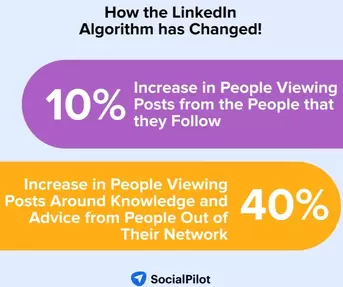 LinkedIn has continued to make algorithm changes focused on content distribution. The latest include the verification badge, adding suggested evergreen posts, changing the format of the posts that are rewarded with higher reach, and a new call to action and newsletter features. The verified badge. Users can now verify their identity on LinkedIn through a variety of methods. Once verified, users get a small badge on their profile. Jurka called it a "trust-builder" that helps you connect with others — but no, your posts don't get more visibility if you're verified. Timeline and Newsfeed Changes: LinkedIn is prioritizing content with lasting value over timely posts. This means that insightful, niche content can have a longer shelf-life and reach a targeted audience over time. Instead of chasing posting trends, LinkedIn encourages users to share their knowledge and insights. This approach is more likely to yield long-term success on the platform. Post Formatting: LinkedIn is moving away from rewarding posts that use clickbait tactics, such as "broetry" (posts with spaces between each sentence), to improve reach. New Features: LinkedIn is developing new Call-to-Action (CTA) button options for user profiles, including a "Subscribe to My Newsletter" option. The platform is also moving away from the term "creator" to better align with the professional title. Also, LinkedIn plans to expand its newsletter product this year. For more details on these changes I found this podcast that will provide more details for each of these algorithm updates. Link to Podcast Thanks for reading. Let me know if you have any questions or additional tips! Kellie Emrich Follow @thesocialprof on Facebook  What are Chatbots? Chatbots are computer programs designed to simulate conversations with users, often seen as pop-up windows offering assistance on websites. Initially, they could only respond to preset scripts, lacking personality. However, modern chatbots leverage advanced artificial intelligence (AI) to comprehend natural language and provide intelligent responses, mirroring real conversations. They continuously learn and improve from interactions, becoming smarter over time. The journey of chatbots began with ELIZA in 1966, which mimicked a therapist using a predetermined script. Since then, the integration of genuine AI has significantly evolved chatbots, enabling them to learn from real dialogues and enhance their capabilities. Today, chatbots are accessible tools that anyone can use, not just tech experts. They are cost-effective and easy to implement on popular platforms. How Small Businesses Can Benefit from Chatbots:
Thanks for reading. Let me know if you have any questions or additional tips! Kellie Emrich Follow @thesocialprof on Facebook Its always a good time to evaluate your social media marketing strategies. Conducting a regular social media audit can greatly contribute to successful marketing strategies. In this blog post, we'll delve into the significance of this audit and offer guidance to prepare your social media strategy for success. 1. Ensure BRANDING consistency on social media platforms Evaluate the consistency of each platform by confirming that it aligns with your existing branding standards. Elements such as profile pictures, bio/descriptions, logos, banners, hashtags, and messaging all play integral roles in shaping your brand identity, and these are the aspects you should focus on. Transfer social media URL Links, Images, and Descriptions to a Spreadsheet for a Holistic Brand Consistency Check. Download my checklist for optimizing social media profiles 2. Evaluate the effectiveness of your social media CONTENT. Identifying top-performing posts and content themes. Analyze their success factors to formulate a plan for incorporating similar content in 2024. Simultaneously, assess underperforming content and decide whether to exclude it from the 2024 strategy or find ways to enhance its performance.
In today's highly competitive job market, establishing meaningful connections is essential. LinkedIn plays a pivotal role in shaping your personal brand and initiating or advancing your career. However, I've observed that many LinkedIn profiles don't fully harness the platform's potential. An unoptimized LinkedIn profile can limit your discoverability and cause you to miss out on valuable opportunities. That's why I'm thrilled to find a resource that offers instant suggestions to enhance a LinkedIn Profile: https://resumeworded.com  Resume Worded utilizes AI-powered technology to provide you with invaluable insights, complete with illustrative examples. This tool assists you in showcasing your accomplishments and skills, selecting the right structure and formatting, and avoiding common mistakes. This can significantly increase your profile's visibility to relevant connections. To get started, the tool offers a free trial, allowing you to upload your LinkedIn profile twice for feedback. I recommend taking advantage of this free feedback opportunity. For those seeking additional assistance with their resume or LinkedIn, Resume Worded offers paid packages starting at just $19 per month. It's a worthwhile investment in your career advancement and personal branding efforts. But, the free access is enough to receive valuable feedback for anyone to improve their brand on LinkedIn..  Not sold on using LinkedIn? Read more about LinkedIn here and how to get started if you are new to the platform. Thanks for reading. Let me know if you have any additional tips or how Resume Worded worked for you! Kellie Emrich Follow @thesocialprof on Facebook  I initially had hesitations about using Chat GPT because I found it mysterious and somewhat scary to hear about its capabilities. Also, as a big picture type of person, I needed to understand the industry of artificial intelligence and where Chat GPT came from before I would feel comfortable using the tool. After conducting some research, I was able to answer the questions I had and feel more confident in using Chat GPT. My hope is that my research can also benefit others who may have similar concerns. I also will tell you about a great place to use Chat GPT and it's not where you think! Where does Chat GPT come from? Chat GPT was created by a business called OpenAI started by a group of entrepreneurs, including Elon Musk back in 2015. The stated mission of OpenAI is the research, development, and commercialization of artificial intelligence. Artificial intelligence (AI) is the ability of a machine to simulate human intelligence. OpenAI started as a nonprofit but eventually a for-profit subsidiary was created. Microsoft is now a major investor in OpenAI Global LLC (the name of the for-profit company.) Several versions of Chat GPT were created before it was released to the public in November of 2022. New versions continue to be released. 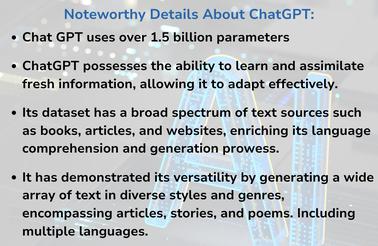 What is Chat GPT? It's important to clarify the meaning of "GPT" in "ChatGPT," so here it is: GPT stands for "Generative Pre-trained Transformer." Instead of describing intricate technical details, I have tried to simplify it:
In summary ChatGPT is a type of artificial intelligence that leverages information and patterns from the internet and its surroundings to provide helpful responses to prompts. You can interact with ChatGPT by asking questions, much like having a regular conversation. People are finding all kinds of ways to use the functionality of Chat GPT. I use this tool for a range of purposes, including summarizing articles, stimulating idea generation, assisting with editing, and similar to a search engine However, my primary utilization centers around its role as a research tool, primarily due to its capacity to provide responses that are notably more detailed compared to those typically obtained from conventional research methods. How to get started? One way to get started with ChatGPT is to create a free OpenAI account. To do this, go to chat.openai.com, and click sign up. You can use an email address, or you can sign in with your Google or Microsoft account. By default, you will have access to GPT-3.5, the base version of ChatGPT and has the least capabilities of all the available models. You can pay to get access to more advanced and updated versions. BUT WAIT! I recommend using Bing Chat instead of ChatGPT through and an AI account. Bing Chat is free and uses the latest GPT-4 language model developed by OpenAI. It’s only accessible through the Edge browser and was released by Microsoft in 2022. I find it to be more updated, faster, and provides more substantial answers than Chat GPT. Access through Microsoft Edge - https://www.bing.com/chat Things to consider when using ChatGPT Protect Sensitive Information: Never input sensitive data into ChatGPT, as it is a third-party service that may store data for AI training purposes. This could potentially violate privacy regulations like the GDPR. Fact-Check: Always fact-check the information generated by ChatGPT, as it may not be entirely accurate. Treat its output as a rough draft. In conclusion, my journey into the world of Chat GPT began with apprehensions about its mysterious capabilities. As a big-picture thinker, understanding the origins and workings of artificial intelligence, particularly Chat GPT, was crucial for me to embrace this tool confidently. Through my research, I am understanding Chat GPT for myself, and my hope is that my findings will be of help to others who share similar concerns.
Thank you, Kellie Emrich Follow @thesocialprof on Facebook Please comment if you have any tips to offer!  In the ever-evolving landscape of social media, new platforms are constantly emerging to capture users' attention and reshape the way we connect online. Meta, the parent company of Instagram, has recently launched Threads, an app designed for sharing text updates and participating in public conversations. Surpassing all expectations, Threads has an impressive user base of over 100 millio, cementing its position as the fastest-growing online platform in history. This remarkable achievement has even outpaced the growth of ChatGPT, the renowned OpenAI chatbot that took two months to reach the same milestone.  To join Threads, users are required to sign up using their Instagram accounts. This seamless integration allows their profile details and follow lists to be automatically populated within the app. Unlike Twitter's real-time, reverse chronological timeline, Threads feature an algorithmic feed reminiscent of Facebook and Instagram. Additionally, the app expands users' content exposure beyond accounts they follow, enhancing unforeseen discovery. For the time being, Threads is exclusively available on mobile devices, reinforcing its commitment to a mobile-first experience. Furthermore, the platform takes a notable departure from Twitter by intentionally avoiding the promotion of hard news or political content. Instead, Threads focuses on fostering conversations around personal interests and shared experiences. Similar to Twitter's defining format, Threads limits posts to a concise 500 characters. However, it distinguishes itself by enabling users to include links, photos, and videos of up to 5 minutes in length. Furthermore, Meta envisions expanding Threads' compatibility with open and interoperable social networks, envisioning a future where the app seamlessly integrates with various platforms. Important Points to Consider Before Using Threads
As Threads continues to gain momentum and carve out its niche in the social media landscape, it remains to be seen how it will adapt and respond to user feedback. Whether it can sustain its unprecedented growth and establish itself as a viable alternative to Twitter is yet to be determined. Nevertheless, Threads represents an exciting development in the realm of social networking, introducing new avenues for expression and connection.
Kellie Emrich, DBA https://www.linkedin.com/in/kellieemrich/ Follow @thesocialprof on Facebook for more social media marketing tips  In the ever-evolving social media landscape, nonprofits should stay abreast of the latest trends to effectively engage their audience, raise donations, and advance their causes. This article highlights six key social media trends that nonprofits can leverage in 2023 to maximize their impact:
In conclusion, nonprofits can enhance their social media strategies by capitalizing on these trends in 2023. By delivering authentic and personalized content, harnessing live video streaming, forging influencer partnerships, exploring micro-donations and AR experiences, and embracing social advocacy, nonprofits can effectively engage their audience and drive positive change in the digital landscape. Kellie Emrich, DBA
https://www.linkedin.com/in/kellieemrich/ Follow @thesocialprof on Facebook for more social media marketing tips The Power of Social Media Listening and Research in 2023: Unveiling Insights in the Digital Age5/30/2023  In 2023, the art of social media listening and research has evolved, allowing businesses and individuals alike to gain invaluable insights into the ever-changing landscape of the online world. Social media listening offers a nuanced, real-time approach, enabling businesses to make data-driven decisions, optimize their strategies, and even predict trends before they go mainstream. By combining social media listening with advanced analytics, businesses can extract meaningful insights and derive actionable intelligence.
In 2023, social media listening and research have become indispensable tools for businesses and individuals seeking to thrive in the digital landscape. The ability to tap into the vast sea of online conversations and extract meaningful insights is a game-changer. By leveraging social media research, businesses can shape their strategies, forge meaningful connections with their audience, and adapt to the ever-evolving digital realm. The power of social media listening and research lies in its ability to unravel the nuances of consumer behavior, identify market trends, and stay ahead of the competition. As we embrace the possibilities of 2023, let us harness the power of social media to unlock insights that will guide us Follow @thesocialprof on Facebook for weekly social media marketing tips.
 In the digital age, harnessing the power of online platforms is crucial for nonprofits to expand their reach and maximize their impact. While many organizations focus on creating a strong website and social media presence, leveraging your Google profile can also be a game-changer. In this Blog, I will explore how you can effectively use your Google profile to support and promote your nonprofit, helping you connect with a wider audience, gain credibility, and drive meaningful engagement.
2. Share Compelling Content and Updates Your Google profile provides an excellent platform to share compelling content and inform your audience about your nonprofit's activities and achievements. Utilize the "Posts" feature on your Google profile to share news, success stories, upcoming events, and volunteer opportunities. Regularly update your profile with fresh and engaging content to captivate your audience's attention and foster a sense of community. Consider integrating multimedia elements like photos and videos to make your posts more visually appealing and shareable. 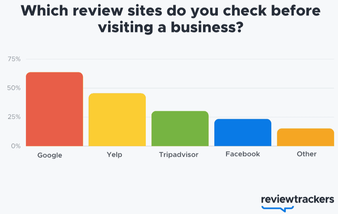 3. Leverage Google Reviews and Testimonials Positive reviews and testimonials can significantly impact your nonprofit's reputation and credibility. Encourage your supporters, volunteers, and beneficiaries to leave reviews on your Google profile, sharing their experiences and the positive impact your organization has had on their lives. Positive reviews not only attract potential supporters, but also provide social proof of your nonprofit's effectiveness and trustworthiness. Respond to reviews promptly and gratefully to show your appreciation for the support and feedback you receive. 4. Use Google for Nonprofits Program Google offers a dedicated program called Google for Nonprofits, providing eligible organizations with a range of tools and resources to support their mission. By joining the program, you can access benefits like Google Ad Grants, which provides free advertising credits, and G Suite for Nonprofits, offering productivity tools like Gmail, Google Drive, and Google Docs. Take advantage of these offerings to streamline your nonprofit's operations, collaborate more effectively, and expand your online presence. Your Google profile can be a powerful tool for your nonprofit, enabling you to amplify your impact, connect with a wider audience, and foster meaningful engagement. By optimizing your profile, utilizing Google My Business, sharing compelling content, leveraging reviews and testimonials, and utilizing Google's nonprofit resources, you can enhance your nonprofit's online presence and increase support for your cause. Embrace the potential of your Google profile and leverage it as a strategic asset to further your nonprofit's mission. Please follow @thesocialprof on Facebook for digital marketing tips and tricks!

For weeks now, I have been reading the recent blog posts and articles about digital trends for 2022. Many platforms have their agendas, but five consistent trends have appeared in all these recent publications. Here I will summarize what I read and provide ideas on how to include these trends in a Marketing Strategy.
1. A continued increase in Videos with more demand for live video. You will also see an increase in gaming and the metaverse and not referring only to Facebook. The METAVERSE refers to the virtual world of augmented reality, virtual reality and 3D holographic avatars and video that create an environment where people work, play, and socialize. Action:

s2. Social commerce will continue to grow. Social commerce gives retailers a way of getting their product/service in front of potential customers through social networks like Instagram, TikTok, and Facebook. Many retailers say large increases in revenue after opening up Instagram Shops and even larger increases with Livestreams. Rob Illidge, CEO of social media agency Social Republic, stated consumers spend three times longer watching live videos than pre-recorded visual content. Many platforms are quickly developing Shoppable Livestream solutions for businesses. Livestreams have also gotten a boost from the pandemic by offering a safe alternative to in-store shopping.
Action:
3. Sustainability and DEI. Research shows that Sustainability and DEI have become increasingly important to consumers. Consumers are switching to brands that reflect their wallet.
Action:
4. Integrating data collection methods that prioritize Consumer Privacy. Many marketers do not realize that your audience is owned by Facebook, Twitter and Instagram or any other social media platform. In addition, Google is getting rid of third-party cookies after 2022. Action:
5. E-commerce, New ways to Pay for Purchases like cryptocurrency, PayPal, and Venmo. Customers are looking for convenient options when they hit “buy now” or “donate now” for nonprofits. Cut down on the number of clicks and offer flexibility for different types of consumers. 50% of consumers will abort their purchase if they don’t see their preferred payment system available (https://blog.saleslayer.com/) Action:
 Do you know what a Nappaccino is or how it can improve your marketing? What about temporal landscaping or input bias? Discovering the psychology behind how customers think can help shape our marketing strategy. Recently, a friend referred me to a self-help book where I learned about chronotype. Chronotype is how your brain’s natural inner schedule works. Learning about my inner clock was interesting, but even more impressive was relating these types of human psychological patterns to Marketing. I ended up reading two of these Psychological Thrillers and there were some great marketing strategies reminders along the way. 6 Marketing Lessons that Psychology Reminds us to Apply in Marketing Strategies Lesson 1 – Timing is Everything! Marketers spend an abundant amount of time creating emails and content. These are important marketing tools, but considering the timing of when each tool should be released is equally important. The Psychologists call this your temporal landscape, match timing to when a customer is most interested and available to read about a topic. For example, send emails with information at the beginning of the week when people are ready to learn something new. Send emails at the start of the weekend when you can relate the content to weekend plans. You could say, “The weekend is almost here” or “Now that the weekend has finally come.” You will have more impact on your audience if they are “ready” or “open” to the subject. Thus, thoughtfully timing your interactions with your audience is essential. Lesson 2 – Life’s Not Fair! But can it be… People need to find fairness. I tell my kids all the time that life is not fair. But this does not keep them or most of us from striving to find and feel fairness in daily interactions. You can use this in marketing messages like social media posts by appealing to this desire for fairness. For example, a nonprofit could say, “Did you know members of our community are denied healthcare. Do you think this is fair?” Let your customers know you are here to level the playing field. Customers feel encouraged when their business experience is transparent, and when they think they matter to a business. Customer Service comes into play here. As a business, be responsive, let the customer know they matter and treated fairly.  Lesson 3 – Why Pay More - Input Bias Customers are willing to pay more for services that seem to take longer, or pay more for a product that takes an exceptional amount of time to develop. This is what Psychologists call input bias. People want to know the effort you put into something. You may have become an expert at a skill, so it takes you less time than most other people. It would help if you let customers know what you went through to develop an expertise. For example, “After 5 years of graduate work and 3 years traveling” or “Every piece we make is handmade and quality assured.” These statements work well in an email subject line to get people’s attention. People want quality and make decisions about quality relatively quickly. Because of input bias, business owners should refer to the time and effort taken to create a product or service. Lesson 4 – “The New Power Nap” So, this one doesn’t have much to do with Marketing, but I find it fascinating, and I can’t wait to give it a try. Daniel Pin calls this the Nappaccino. You have a cup of coffee, then nap for 20 minutes. You will wake up just in time to get a boost of energy from the caffeine. A boost of energy around 3:00 every day sounds good to me :). He also states the ideal break time is 17 minutes for every 52 minutes of work. You might think you are losing time, but research shows that breaks help increase productivity. Lesson 5 – You Don’t Control Me People like to be in control, so customers need choices. When customers have options, they are deciding on how to respond, not if they should respond. Moreover, the more control a customer feels, the more likely they will do what you want them to. Instead of asking, “Would you do this?” ask, “Which one do you choose?” Provide options for getting more information. For example, when you want a customer to contact you, provide options such as, Click-here, email or give them a scannable code to use. Different package options, contact options, and more information options appeal to a customer’s sense of control.  Lesson 6 – A Little Flattery Goes A Long Way - Labeling Refer to people how they would like to envision themselves. A wellness company could start an email with “As a responsible person taking control over their health” or “As a valuable resource to your organization.” Shining the light on your customers’ visions and goals allows them to see that you know them and understand what they need. Provide your customers with a reference group and compliment who they are. Create a vision, allowing customers to see themselves positively and achieving their goals. Conclusion Understanding your customers is a critical piece in any marketing strategy. These lessons help enhance our understanding of customers' behaviors. Supplying your audience what they need, when they need it, how they need it, and why they need it keeps customers interested. And most importantly, make a sale– hopefully from your business! Help us all continue learning. What other behavioral techniques have you learned about customers from Psychology? Share on Facebook for even more ideas.   If the essential elements are not present in your content, it does not matter how fancy or the usefulness of the information you provide. The reader will lose interest if they cannot easily find the main points. Don't make it hard on yourself, it takes following some guidelines each time you write. Check off these 9 elements to ensure you have the necessary components for easy reading. Use this checklist before you post any content for a blog, email, or social media article. 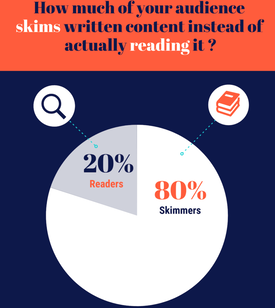 1. Know the problem you are solving for the audience. - Your content should be about the customer and what information they need. Not about your business and what products or services you are providing. Know the type of content that fits your buyer persona and write the content to them. 2. Use headings and subheadings – Have an eye-catching heading at the top. Then, create subheadings to break up every 1-3 paragraphs. 3. Use images – One image at the top and another 1-3 images throughout the content. But, make sure each image is relevant and adds to the content. 4. Keep paragraphs short, on average, 4 sentences. – Stay away from a long paragraph, instead break into 2 or 3 paragraphs. Readers tend to lose focus during longer paragraphs 5. Create lists or bullets where possible. - Readers enjoy looking at and reading a list or a set of bullet points instead of ideas separated by commas. Break processes up into steps and use bullet points to summarize a topic. 6. No underlining in your content, use bold or block quotes. – On the web, underlining text makes readers think there is a link. Instead of underlining, use bold, italicize, or use block quotes. You are currently reading an example of a block quote. 7. Make sure the writing is scannable for main points - People like to look through readings first. If it does not seem easy to read, and the main points do not stick out, they are less likely to read the content. 8. Add a Link – Pick your call to action and add the link to go along with it—a link to your website, email sign up, or social media. But, do not have a link to everything. Decide the one action you want from a specific piece of content. 9. Edit – Don’t rely on your editing technique. Use Grammarly and Hemmingway apps to find errors. Also, read each sentence backward to help draw out errors in sentence structure and wording. Creating a habit writing with these essential techniques will increase the number of people who read your content. Get in the habit of including these, then you can start to get fancy and people will notice. I am often asked my favorite website or blogging platform. I have tried many different ones and all I needed was wordpress and bluehost. They make the process easy and affordable to get started. Good luck on your writing journey. It's not easy, but nothing worth doing ever is.
Kellie Emrich, DBA  If you do not have a strategy to monitor your brand online, then someone else will do it for you. Imagine a negative comment, a question, or a review online about your business that you or not aware of. 82% of consumers read online reviews for local businesses. 84% of these consumers trust online reviews as much as personal recommendations (https://www.brightlocal.com). Social media is an amazing marketing tool, but you must monitor the conversation because there will be one whether you are controlling it or not. Protect yourself by incorporating Brand Monitoring into your strategy.
 Be a brand that is quick to respond and a trusted resource in your industry. Remember, if you do not take control of what people are saying about you then someone else controls your image. Kellie Emrich, DBA Follow @thesocialprof on Facebook  Promoting content the right way can help you work more efficiently. After all, you spent a ton of time creating content why not make sure the right people can see your content. Social media provides a source to immerse your business with an audience. Creating engagement has proven to be the key to an effective promotional strategy. This is why social media marketing is important for small businesses.  With 3.2 billion worldwide social media users (Source, Statistica) even a fraction of that audience can benefit from your business. To increase engagement you need to promote your business on social media consistently and creatively. Promoting your content with these tools for social media marketing can engage an audience and providing value where others cannot. Here are techniques to help you promote your content.
Follow the social prof on Facebook for more tips and resources for social media marketing. Kellie Emrich www.thesocialprof.com @thesocialprof [email protected] 
Many social media organizations are providing small businesses with Free Resources that are extremely helpful during these times of social distancing. Often these resources are expensive or did not exist before. Now, is an excellent time for business to utilize these resources to improve and develop marketing efforts. I will keep the list updated as additional resources become available. Follow my Facebook Page for these updates.
These are challenging times for marketing on social media. But there are opportunities to grow, develop skills and engage with customers to become stronger when this crisis is over. Together we can make these challenges opportunities. 
Social Media Resources Available to Small Business
How to Market on Social Media During Covid-19
Additionally, there are numerous resources on how to optimize social media during COVID-19. What should you say or not say in social media marketing? What are some ideas small businesses can accomplish during business closures? There are some themes that I see repeatedly. I have combined these with my findings into four essential tips to keep in mind in your social media marketing. These tips will help you generate ideas and create focus in your current marketing efforts.
1. Do not stop communications on social media: Increase communications that align with the goals and aspirations of your audience.
Join my Newsletter for the Most Recent Marketing Tips

Imagine a news feed filled with inspirational messages, information about your hobbies, or resources on what matters to you. With a little more paying attention this is how social media can transform for us.
Now is an excellent time to pay more attention. Often in our journey on social media, the endgame always seems to be gathering attention. People drop out of the game because there is so much attention seeking. However, social media offers this great benefit that many are not utilizing. Think about all the people and information accessible via these social platforms. Try diverting your focus to using social media to pay more attention, observe, and learn. 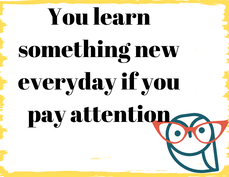
For small business owners, now is the time to get online and listen. Find out about your customers and what motivates them, the information they seek, and the struggles they encounter. You can learn ways to engage with customers by paying attention, then provide the information and knowledge they crave. Want to get started in the process? Read more here.
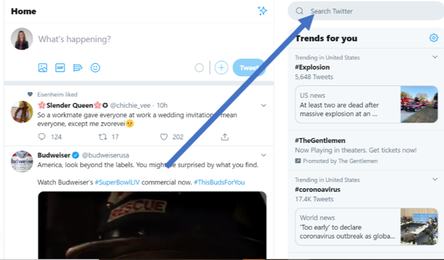
How Do We Pay More Attention?
The search box on many social media platforms is like Google. You can use these search boxes to discover groups and pages you want to follow. There are plenty of groups and pages out there about almost anything. I have joined many groups and followed many profiles and pages on subjects I enjoy. Start with Facebook, the largest social media platform. My newsfeed on Facebook includes information about my hobbies and things I want to learn. Instagram is educational content and inspirational posts. Want to customize what you see on your Facebook newsfeed? - Facebook newsfeed preferences. I taught my daughter how to do this on Snapchat, her favorite social platform. The search box in Snapchat is in an area called Discover. To find Discover on Snapchat, swipe from right to left on the camera screen. You can use the search box to see stories and pages, then subscribe to what interests you. She has benefited from several resources for her learning and hobbies. 
My Hard Truth About Paying Attention?
One day, my daughter asked me to take her out to buy a trash can. However, we have plenty of trash cans in our house, so there was no need to buy a new one. She told me it was for a new idea she had. She’s quite crafty, you see. I fell for it, and we visited three stores to find the perfect trash can. While we were still in the store, she started taking pictures of her newly named trash can Tim, placing Tim on a chair or between stuffed animals. I had no idea why she was doing this, but I helped her find fun spots to take pictures of Tim. 
Later, she told me it was her new idea for social media. Apparently, some of her friends were receiving hundreds of likes for various activities they were participating in, so she wanted a similar experience. Her ideas were to bring a trash can into her life and go on adventures with it, like learning to ride a bike, and take pictures of these escapades. In sum, my daughter wanted the same attention she thought all her friends were receiving online. I knew I had to quickly change this way of thinking.
In short, social media is a great tool if you are paying attention rather then trying to get attention. In a world where we are home and need positive images, changing our mindset is a great start. Focus for the sake of focusing, without desiring anything else.
Want to learn about social media marketing and how to make it work for you? Follow @thesocialprof on Facebook. Enjoy! Kellie Emrich @thesocialprof
Receive monthly updates on Social Media Marketing with the latest trends, tips and resources.

There is one concept in the world of social media marketing that proves to be the key to marketing on social media. Businesses who learn this concept state their social media marketing finally improved. Without this knowledge, no amount of time, money, utilizing new trends or modern techniques made much of a difference. What made a difference was making this shift in thinking about attracting customer. Get ready to learn something that will change your marketing for the better.

the Customers do not want to know about what is going on with your business. Customers want solutions and information. Customers do not care about your events, photos, or sales pitch. Customers care about learning and finding content to solve problems. The key to social media marketing is to provide content that fills the needs of the audience. The goal of social media marketing is not to talk about your business, not to sell, and not always posting updates or pictures. The goal of social media marketing is to find an audience, provide the information they are looking for, and solve their problems. Look at an example - A dance studio utilized many social media accounts. The business was posting pictures at events, key dates, and sales ads. They were posting beautiful images and advertisements that very few engaged with. All this effort and social media accounts were not growing or generating more sales or website visits. Until the strategy changed and became more about what the audience wanted to learn. So the business did research(social listening) and made some key changes that focused more on content. The research led to learning about the audience and what they wanted to learn. The new posts were short instructional videos and photos, how to's, and infographics. Consisting of teaching trendy dance moves and videos to get in shape. They also shared tips to be more flexible and how to use dance to relieve stress. These ideas came from social listening and focusing more on information for the audience. Yes, you do want to eventually sell to the audience, but only at the right time. With social media, 20% is selling, and the other 80% is content. Once you have an engaged audience and built trust, then talking about your business and selling a product or service can be useful. Think about it, digest and use it. - The goal of social media marketing is to find an audience, provide the information they are looking for, and solve their problems. Doing this is not easy and finding the right audience and content takes time and patience. Starting with this concept in mind will ensure a more success social media marketing strategy. Please comment here about how you will use this concept. Or, if you already do tell us how you have utilized content in your marketing. Follow me on Facebook for weekly marketing updates. Dr. Kellie Emrich, DBA Professor of Marketing The Social Prof
Subscribe to stay informed with my latest posts.

Would you want a salad without dressing? What about watching a basketball game without a referee? How about social media marketing without analytics? The answer is No. Without analytics, you would not understand if a strategy is working. There are numerous resources out there, and it can be confusing. Keep it simple to start and build as you learn. Be sure to start by defining your social media goals. Examples include brand awareness, brand loyalty, generating leads, or customer service. Below is a summary of some of the most popular goals for social media and what key indicators you could use.
The great news is that each platform makes this data easy to find and track at no cost. Finding analytics on each platform is a little different. Here are some of the most common platforms and where the platform keep analytics.
Twitter – Find analytics on the Twitter analytics dashboard Facebook – Find analytics on the Insights tab. These are only available on a Facebook Page (not profile) after receiving 30 likes. Instagram – To see Instagram analytics, you need a business account and 100 followers. Each of your posts will show “view insights” to click on and you can see how each post performs. You can also look at all analytics by clicking in the upper right corner icon, then insights. SEM Rush is my favorite analytical tool that I do pay for because I find the resource beneficial. You can analyze data in more detail and bring in your website data and SEO. Also you can view audience behaviors, track competitors, keep up on keywords, keep up on trends and do social media listening.
I suggest downloading some of your key analytics and keeping the data in one excel file or workbook. This allows you to prioritize key performance indicators and not get overwhelmed with the amount of data each platform gives you.
Likes on social media is a measurement that many of the the platforms talk about removing. Instagram has been removing likes for public view in other countries and is starting to do the same in the US. The reasoning is to reduce social anxiety. Click on the social prof facebook page below and look for the recent post on this topic. Vote for if you agree or disagree and in the comments state why you voted the way you did.
 I know I say it often when talking about social media marketing, and here I go again, no selling your product or service on a blog. For marketers, I know that it is tricky. Consumers go to blogs for information, not to see advertisements. Too much selling can diminish the value of a brand. Instead, offer knowledge while building trust and respect. That’s not to say we do not provide links or offers. The key is providing an abundance of information, so your potential audience clicks through to your business to find more. For all content marketing outlets on social media, stick to an 80/20 Rule. Provide content 80% of the time, sell 20% of the time. Always have these five tips in mind –
 Remember, it takes time to establish good blogging habits. Be willing to use trial and error learning from what is working and not working. As you write, you will get better and better and learn more about what attracts an audience in your industry. You can have fun, learn, and blog all at the same time. Please offer any additional tips especially on how you ensure your writing is properly edited? Additional Resources for Content Marketing
Wheel of Content Types Storytelling Content Marketing Process Storytelling for Social Media Content marketing is about telling a story that builds relationships and identifies you as a potential guide to solve problems. Telling stories can transform information into solutions and show we care about helping our audience. “Developing the content in our content marketing strategy is developing the stories of us. It’s the big ideas that we represent. It’s the differentiated experiences we want to create. It’s what we REALLY do for a living. For better or worse — it’s that simple.” Content Marketing Institute Not all of us are storytellers. I had to go out and find help. The best resource I found was from https://www.mystorybrand.com/ created from the book “Story Brand” by Donald Miller. The story brand template on the website offers a great way to get started with storytelling. Fill in the blanks with his prompts and it will make you think creatively and start to generate a story from your ideas. Key Points I learned from using the Story Brand Template
Airbnb - https://www.facebook.com/watch/?v=10153215613209727 A rather massive brand that has taken the world by storm settles into an amazingly powerful bit of storytelling, and shows the rest of the world how it’s done. Airbnb felt that telling a story that was simply inspirational was surely the best way to get people feeling emotions and buying into the brand it had created. And it worked. Honorable Mention: Google is Telling a story, literally Google don’t really have to market anymore, they are simply working on ways to keep their fans happy. And this video is a perfect version of that. Good luck with your storytelling and please let me know if you have any other ideas or resources to help create stories on social media. Dr. Kellie Emrich @thesocialprof After reading this article take a shot at creating your own Buyer Persona.
blog.hootsuite.com/buyer-persona/ I love these infographics that explain how to create compelling posts on each social media platform. Each platform is just a little bit different, so it is essential you know how to create engaging posts for each one. After reading and researching articles like this, I have found three specific details that should be in every social media post. 1. 2-3 Hashtags - You might have one branded hashtag, but then you want to research 3-4 other hashtags., Be sure to use more specific hashtags instead of generalized hashtags. (An example of a hashtag that is very general is #socialmediamarketing a better hashtag could be #socialmediaforentrepreneurs) 2. A Call to Action – The information you provide should be so exciting that your audience wants more. Be sure to provide links that continue your audience to explore your business further. Examples – subscribe here, join our community, book today, get more information, risk-free quote 3. Use Keywords and Trigrams – Be sure to do keyword research. These are terms your audience uses on the internet to find information. Including keywords in your post will help you be found on social media. Trigrams are three-word phrases that are the most powerful phrases on social media. The chart below was taken from Steve Rayson’s research on 100 million headlines. Taking the time to create meaningful posts can help to generate engagement and interest for your product or service. Also click on the You Tube video below to learn how to create your own Infographics for your website or social media platforms. Trigrams
Speech Bubble – Allows for a conversation view between users. Speech bubble could be useful for businesses to converse with customers and track and manage these conversations. |
Blog Presented by
Dr. Kellie Emrich Archives
April 2024
Categories |



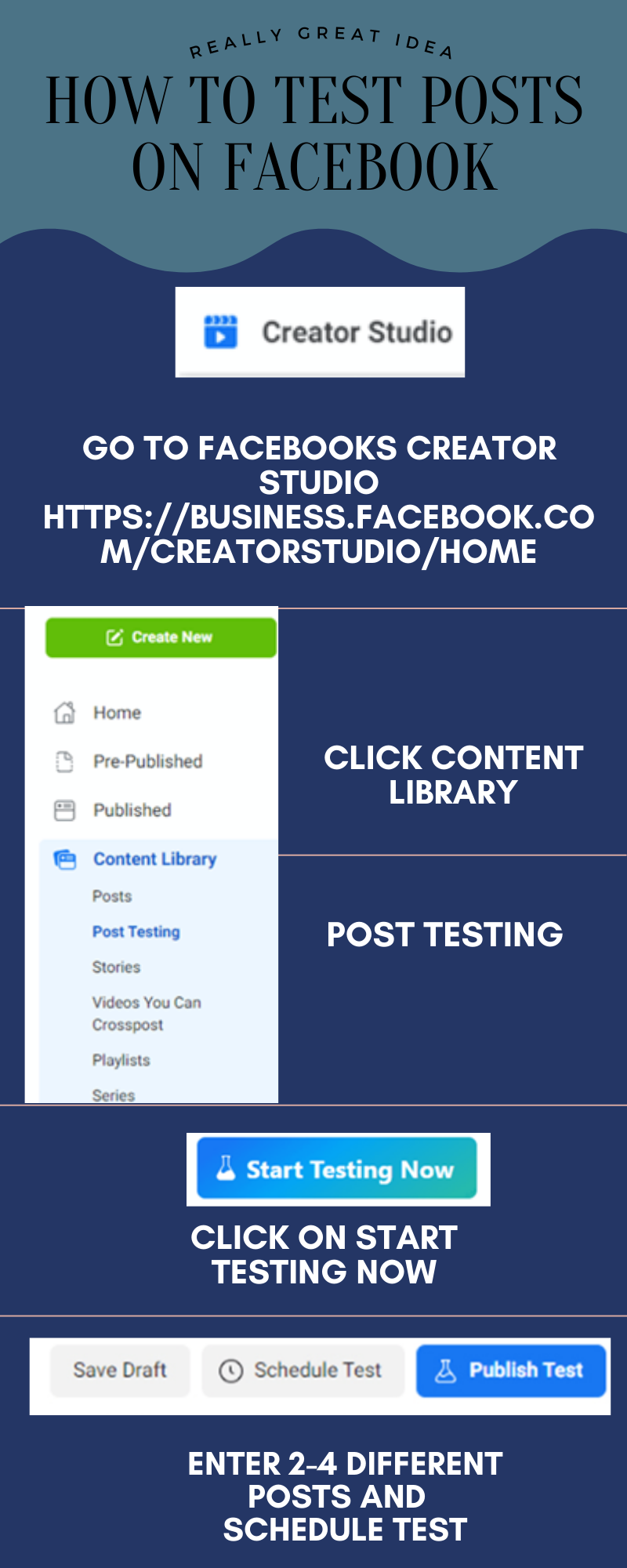







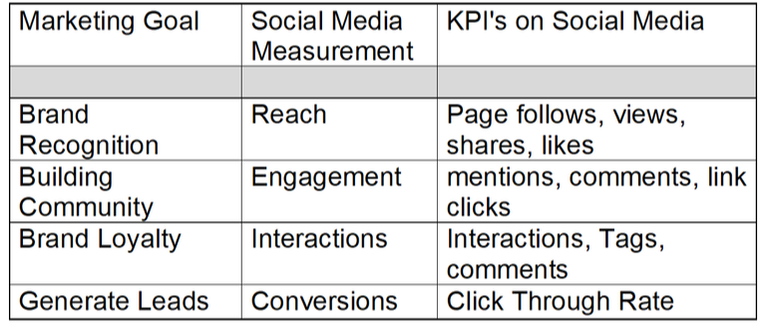


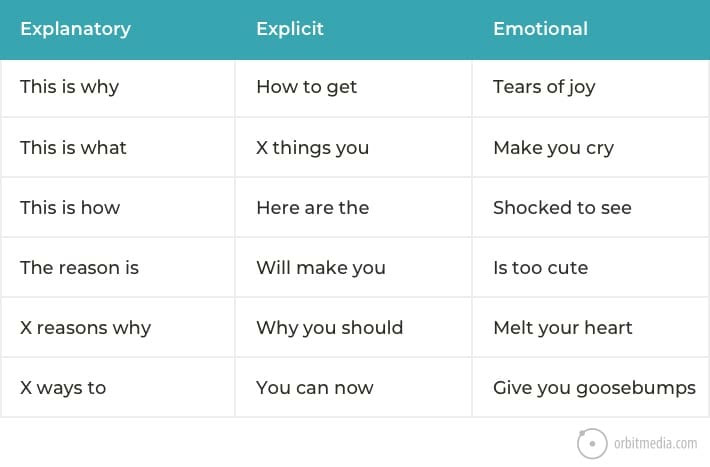
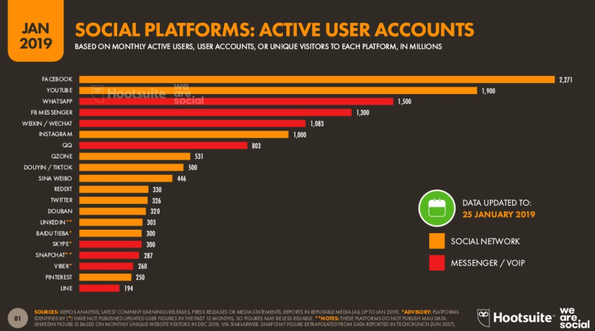




 RSS Feed
RSS Feed